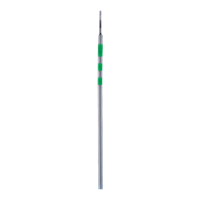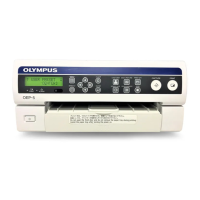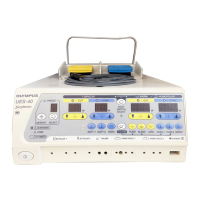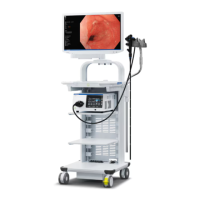6
Important Information — Please Read Before Use
VISERA RHINO-LARYNGO VIDEOSCOPE ENF-V2
• Transnasal insertion is accompanied by the risk of bleeding
in the nasal cavity. Be sure to be prepared to deal with any
bleeding. When withdrawing the endoscope, observe the
inside of the nasal cavity to ensure that there is no bleeding.
Even when the endoscope has been withdrawn without
bleeding, do not allow the patient to blow his or her nose
strongly because this could cause it to start bleeding.
• Before transnasal insertion, apply the appropriate
pretreatment and lubrication to the patient to enlarge the
nasal cavity. Otherwise, operator and/or patient injury can
result or the endoscope could become lodged and be difficult
to withdraw. Otherwise, the treatment will have no effect. The
effects of the pretreatment agent and lubricant will decrease
the longer the procedure lasts. Apply the pretreatment agent
or lubricant as required during the procedure
– for example,
when withdrawal seems to be difficult.
• Transnasal insertion of the endoscope should be performed
carefully. If resistance to insertion is felt, or the patient reports
pain, stop insertion immediately. Otherwise, operator and/or
patient injury can result or the endoscope could become
lodged and be difficult to withdraw.
• If it becomes impossible to withdraw the transnasally inserted
endoscope, pull its distal end out of the mouth, cut the
flexible tube using wire cutters and, after ensuring that the cut
section will not injure the body cavity or nasal cavity of the
patient, withdraw the endoscope carefully. Therefore, always
prepare wire cutters in advance.
• Do not touch the metal parts of the light guide and the light
guide connector immediately after removing the light guide
from the endoscope and light source because they are
extremely hot.
• Although the illumination light emitted from the endoscope’s
distal end is required for endoscopic observation and
treatment, it may also cause alteration of living tissues such
as protein denaturation of living tissue and perforation of the
tissue by inappropriate using.
Observe the following warnings on the illumination.
Always set the minimum required brightness.
Please note that the brightness of the image on a video
monitor may differ from the actual brightness at the distal
end of the endoscope.

